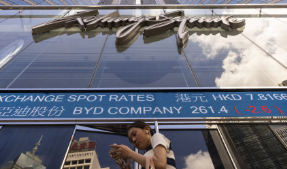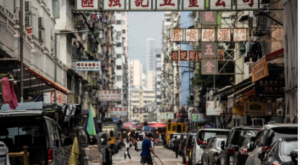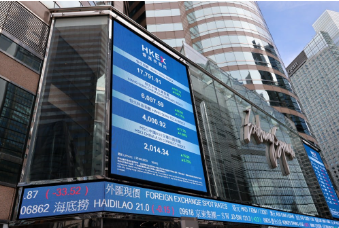Hong Kong’s financial markets are experiencing a significant boost as the Hang Seng Index surged by more than 3% on Tuesday, fueled by aggressive policy easing announced by the People’s Bank of China (PBOC) during an extraordinary briefing led by central bank governor Pan Gongsheng. This surge not only reflects investor optimism but also signals a pivotal shift in China’s economic strategy.

Key Policy Announcements by the PBOC
In a groundbreaking move aimed at revitalizing the economy, the PBOC declared it would reduce the reserve requirement ratio (RRR) for banks by 50 basis points. This strategic adjustment is designed to enhance liquidity and stimulate lending in the financial sector. Additionally, the central bank lowered the seven-day reverse repurchase rate from 1.7% to 1.5%, further encouraging economic activity.
Pan Gongsheng indicated potential cuts to the loan prime rate (LPR), suggesting a reduction of 0.2 to 0.25 percentage points could be on the horizon. The current one-year LPR stands at 3.35%, while the five-year LPR is set at 3.85%. These measures aim to invigorate lending and drive growth in a slowing economy.
Market Reaction: A Wave of Optimism
The response from the market was immediate and robust. The CSI 300, which tracks major companies on the Shanghai and Shenzhen stock exchanges, climbed by 2.4% following the announcement, with consumer non-cyclical stocks leading the rally. Winnie Wu, a strategist at Bank of America, described this move as a “big bang” intended to boost investor confidence. However, she cautioned that while the short-term outlook appears positive for sectors like banking and insurance, a sustainable recovery in domestic consumption may require further fiscal reforms.
Regional Market Overview
- Hong Kong’s Hang Seng Index: +3.76%, closing at 18,933.03.
- Shanghai Composite: +3.87%, finishing at 2,855.27.
- Nikkei 225 (Japan): +0.8%, reaching 38,025.39, marking a notable milestone.
- South Korea’s KOSPI: +0.6%, closing at 2,617.67.
- Australia’s S&P/ASX 200: -0.05%, ending at 8,148.5.
Comparative Performance with U.S. Markets
The positive momentum in Asia aligns with recent trends in U.S. markets. The Nasdaq Composite saw a modest increase of 0.14%, while both the S&P 500 and Dow Jones Industrial Average achieved record closing highs on Monday. The S&P 500 gained 0.28%, concluding at 5,718.57, and the Dow Jones rose by 0.15%, closing at 42,124.65.
A Turning Point for Investor Sentiment
The PBOC’s decisive policy easing marks a critical juncture for Hong Kong and broader Asian markets. As central banks worldwide navigate complex economic landscapes, the implications of these measures will be pivotal in shaping investor confidence and market dynamics in the coming months.
On September 23, 2024, Hong Kong’s Hang Seng Index surged over 3% following significant policy easing measures announced by the People’s Bank of China (PBOC). This robust rally was led by gains in consumer non-cyclical stocks, which have been bolstered by investor confidence stemming from the PBOC’s actions.

While the Hang Seng Index experienced a significant uptick, mainland China’s CSI 300 also reported gains of 2.4%
Meanwhile, Australia’s S&P/ASX 200 fell 0.19% amid uncertainty surrounding the Reserve Bank of Australia’s next moves, even as the US markets closed at record highs.
